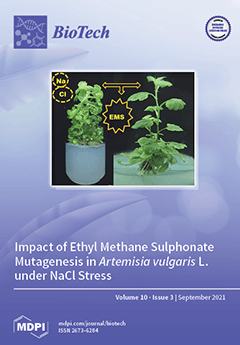Background: The emergence of “multi-omics” and “multi-parametric” types of analysis based on a high number of biospecimens enforces the use of a great number of high-quality
“Biological Materials and Associated Data” (BMaD). To meet the demands of biomedical research, several Biological Resource Centers
[...] Read more.
Background: The emergence of “multi-omics” and “multi-parametric” types of analysis based on a high number of biospecimens enforces the use of a great number of high-quality
“Biological Materials and Associated Data” (BMaD). To meet the demands of biomedical research, several Biological Resource Centers (BRCs) or Biobanks world-wide have implemented a specific Quality Management System (QMS) certified ISO 9001:2015 or accredited by CAP
9 ISO 20387:2018. For the first time, ISO, with the support of several Biobanking experts, issued the ISO 20387:2018 which is the first ISO norm specific for Biobanks. The fundamental difference with present certification/accreditation standards is that the ISO 20387:2018 focuses not only on the operational aspects of the Biobank, but also on the “competence of the Biobank to carry our specific Biobanking tasks”. Methods: The accreditation process for ISO 20387:2018 required the definition of: (1) objectives, goals and organizational structure of the Biobank, including procedures for governance, confidentiality and impartiality policies; (2) standard operating procedures (SOPs) of all activities performed, including acquisition, analysis, collection, data management, distribution, preparation, preservation, testing facility and equipment maintenance, calibration, and monitoring; (3) procedures for control of documents and records, the identification of risks and opportunities, improvements, corrective actions, nonconforming records and evaluation of external providers (4) an internal audit and management reviews, verification of QMS performance, monitoring of quality objectives and personnel qualification and competency in carrying out specific Biobanking tasks. Results: The accreditation process is performed by an independent authorized organization which certifies that all processes are performed according to the QMS, and that the infrastructure is engineered and managed according to the GDP and/or GMP guidelines. Conclusion: Accreditation is given by an accreditation body, which recognizes formally that the Biobank is “competent to carry out specific Biobanking tasks”.
Full article






